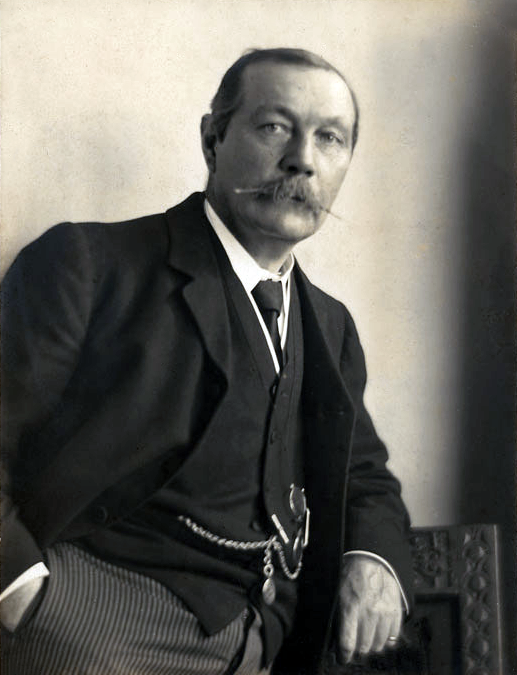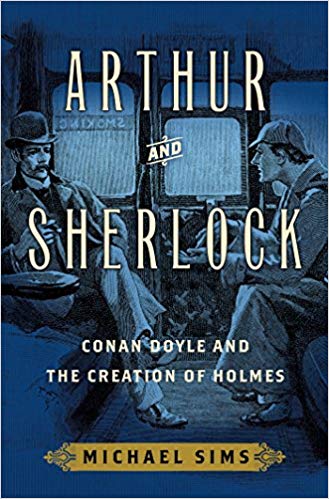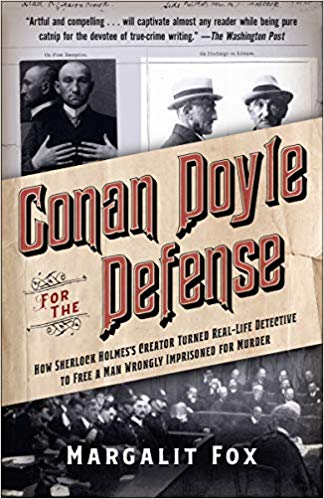“‘I play the game for the game’s own sake,’ said he. ‘But the problem certainly presents some points of interest, and I shall be very pleased to look into it. Some more facts, please.'”
–Sir Arthur Conan Doyle,
The Adventure of the Bruce-Partington Plans
Physician authors looking for inspiration needn’t look far—some of the most well-known authors in world literature have been physicians. William Carlos Williams, Anton Chekhov, Khaled Hosseini, Somerset Maugham, Tess Gerritsen, C.J. Lyons, Abraham Verghese, Oliver Sacks … to name but a few.
As the first in an ongoing series of physician author profiles, this post will focus on the physician who created the world’s best-known detective: Sir Arthur Conan Doyle, creator of Sherlock Holmes.
Beginnings
Dr. Conan Doyle was born Arthur Ignatius Conan Doyle on May 22, 1859, in Edinburgh, Scotland, to a prosperous Irish-Catholic family. His mother, Mary Foley Doyle, was said to be a master storyteller, a gift which her son later wrote about in his autobiography, and a trait that served as a major influence in the development of the author’s own similar talent.
Conan Doyle’s decision to pursue a medical career was influenced by Dr. Bryan Charles Waller, who had trained at the University of Edinburgh and who resided as a temporary lodger in their family household.
While studying medicine at the University of Edinburgh himself, Conan Doyle was exposed to other future authors who were also students there, including Robert Louis Stevenson and James Barrie, among others. But it has been well documented that the person who influenced and impressed Conan Doyle the most was Dr. Joseph Bell, one of his professors whose powers of observation and deduction inspired the characterization of Sherlock Holmes.
Short Story Success
While he was still at medical school (a couple of years in), Conan Doyle published a short story, “The Mystery of Sasassa Valley,” in Chamber’s Journal, an Edinburgh magazine.
Later that year, Conan Doyle found more literary success with the publication of another short story, “The American Tale,” which was published in London Society. He would later write that this was the year “that I first learned that shillings might be earned in other ways than by filling phials.”
The following year, at the age of twenty and in his third year of medical school, Conan Doyle was offered the post of ship’s surgeon on the Hope, a whaling boat, which was about to leave on a trip to the Arctic Circle. The post promised adventure and excitement, and Conan Doyle took it. He would use these experiences to inform his first story about the sea, “Captain of the Pole-Star.”
“Licensed to Kill”
Upon graduating in 1881 with a “Bachelor of Medicine and Master of Surgery” degree, Dr. Conan Doyle displayed his sense of humor with a sketch he drew of himself receiving his diploma, with this caption: “Licensed to Kill.”
While he practiced medicine first as a medical officer on the steamer ship Mayumba and then in his own practice (which he opened while on the verge of bankruptcy), he continued to want to write and to establish himself as an author. As The Official Site of the Sir Arthur Conan Doyle Literary Estate puts it, “During the next years, the young man divided his time between trying to be a good doctor and struggling to become a recognized author.” Many aspiring physician authors today can relate!
Literary Breakthrough
In 1888, Conan Doyle’s first novel, A Study in Scarlet, was published in Beeton’s Christmas Annual. This was the novel that first introduced to the world the characters of Sherlock Holmes and Dr. Watson (although the characters were initially called Sheridan Hope and Ormond Sacker, and Conan Doyle’s first title for the novel was “A Tangled Skein”).
In an interesting literary twist, in 1889 the managing editor of Lippincott’s Monthly Magazine in Philadelphia, Joseph Marshall Stoddart, invited Conan Doyle to dinner in London with Oscar Wilde at the elegant Langham Hotel (a location which would appear later in several Holmesian tales). Stoddart was in London to pursue the organization of a British edition of Lippincott’s, and after this literary meeting, commissioned Conan Doyle to publish The Sign of Four, the short novel that became instrumental in setting Sherlock Holmes and his creator down in the annals of history.
Making a Choice
Of interest to physician authors, Dr. Conan Doyle wanted to specialize in ophthalmology, but that was never realized due to the difficulties of overcoming a foreign language (he would need to study in Vienna), and after a visit to Paris, he returned to London, where he opened a general practice in Upper Wimpole Street, an elegant location where, according to his autobiography, he never saw a single patient.
He continued to write, however, and in 1891, contracted a severe case of influenza while writing some of the earlier Holmes short stories. This gave him an unexpected chance to reconsider the balance of trying to pursue both a medical career and a literary one at the same time. He would later write that, once his health improved, he decided to abandon his medical career “with a wild rush of joy.” He stated, “I remember in my delight taking the handkerchief which lay upon the coverlet in my enfeebled hand, and tossing it up to the ceiling in my exultation. I should at last be my own master.”
What many don’t know, however, is that this was not to mark his last efforts as a physician. His first wife, Louisa, became ill with tuberculosis, and was expected to live only a few months more, but due to Conan Doyle’s ministrations, she lived a dozen years longer than expected (dying on July 4th, 1906, in his arms).
Conan Doyle also volunteered as a physician in the Boer War, sailing to Africa in 1900 to treat both soldiers and medical staff, more of whom died of typhoid fever than of battle injuries. He penned The Great Boer War, a scholarly, 500-page chronicle of the war that was published in October 1900.
Lessons for Today’s Physician Authors
Conan Doyle’s story depicts a number of the same issues faced by creative physician authors today: how to balance medicine and creative writing, how to find time for writing, how to “break into the business.” But what he and all physician authors bring to bear when writing creatively are their medical experiences and the lessons learned from caring for fellow human beings in the most intimate of ways.
And perhaps most of all, his story illustrates the importance of never giving up, an attitude that serves all authors well, no matter the background.
Seeking a creative writing career yourself, but don’t know where to start? Check out my services for physician authors.
Sign up for “The Writer Is In” newsletter and never miss a post: https://yasminealimd.com/newsletter-sign-up/
To learn more about Sir Arthur Conan Doyle, check out the following books:



